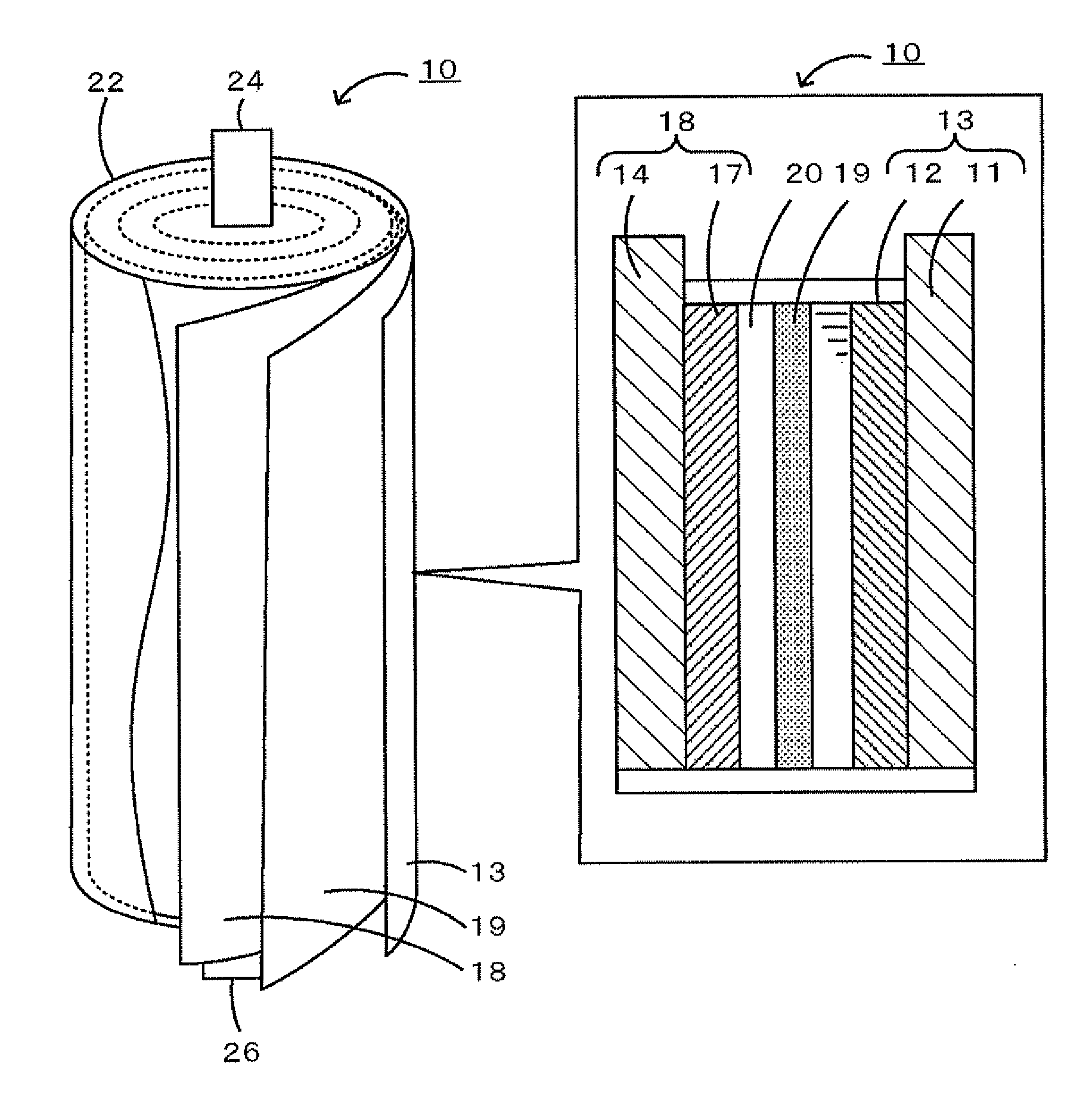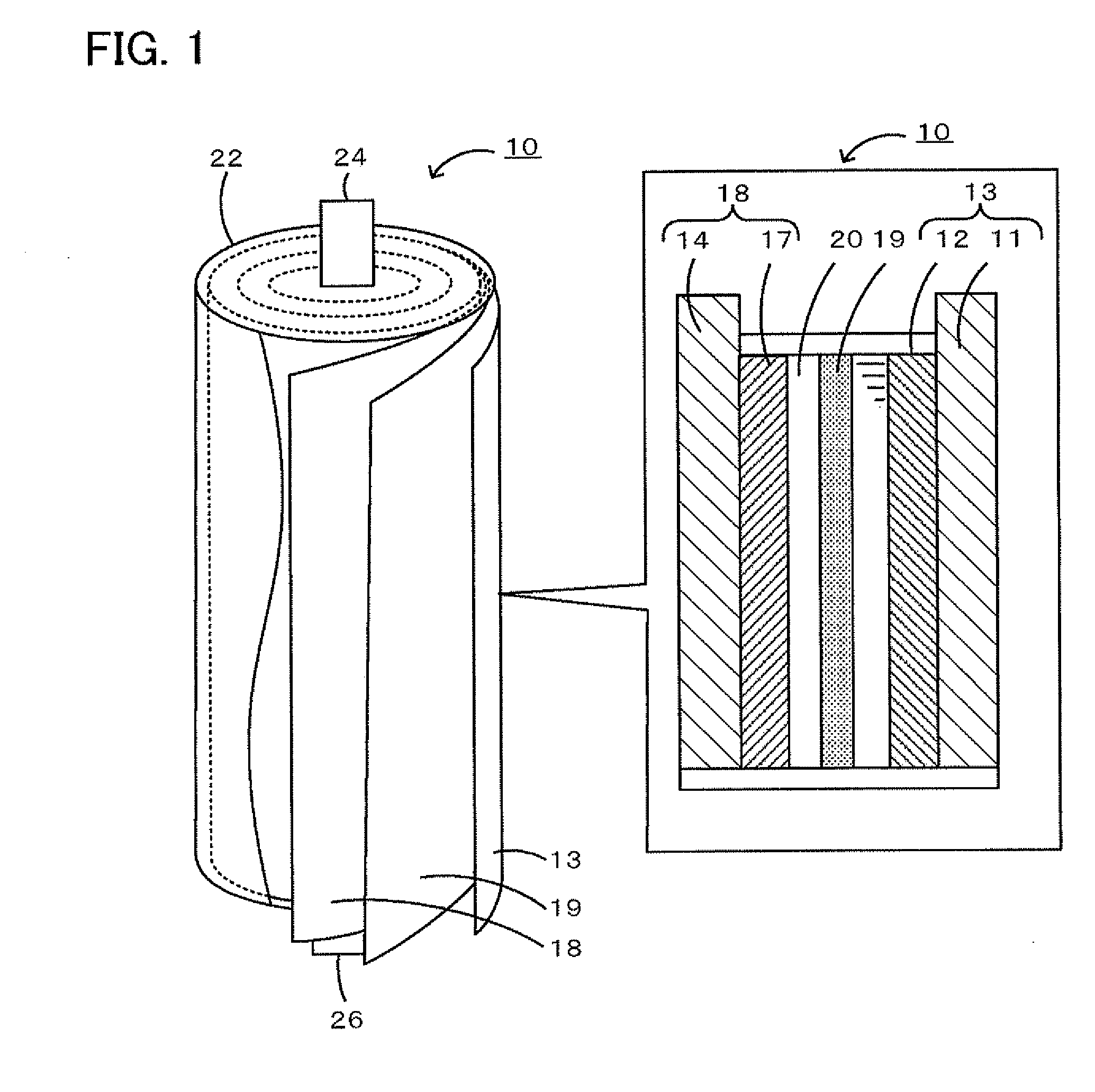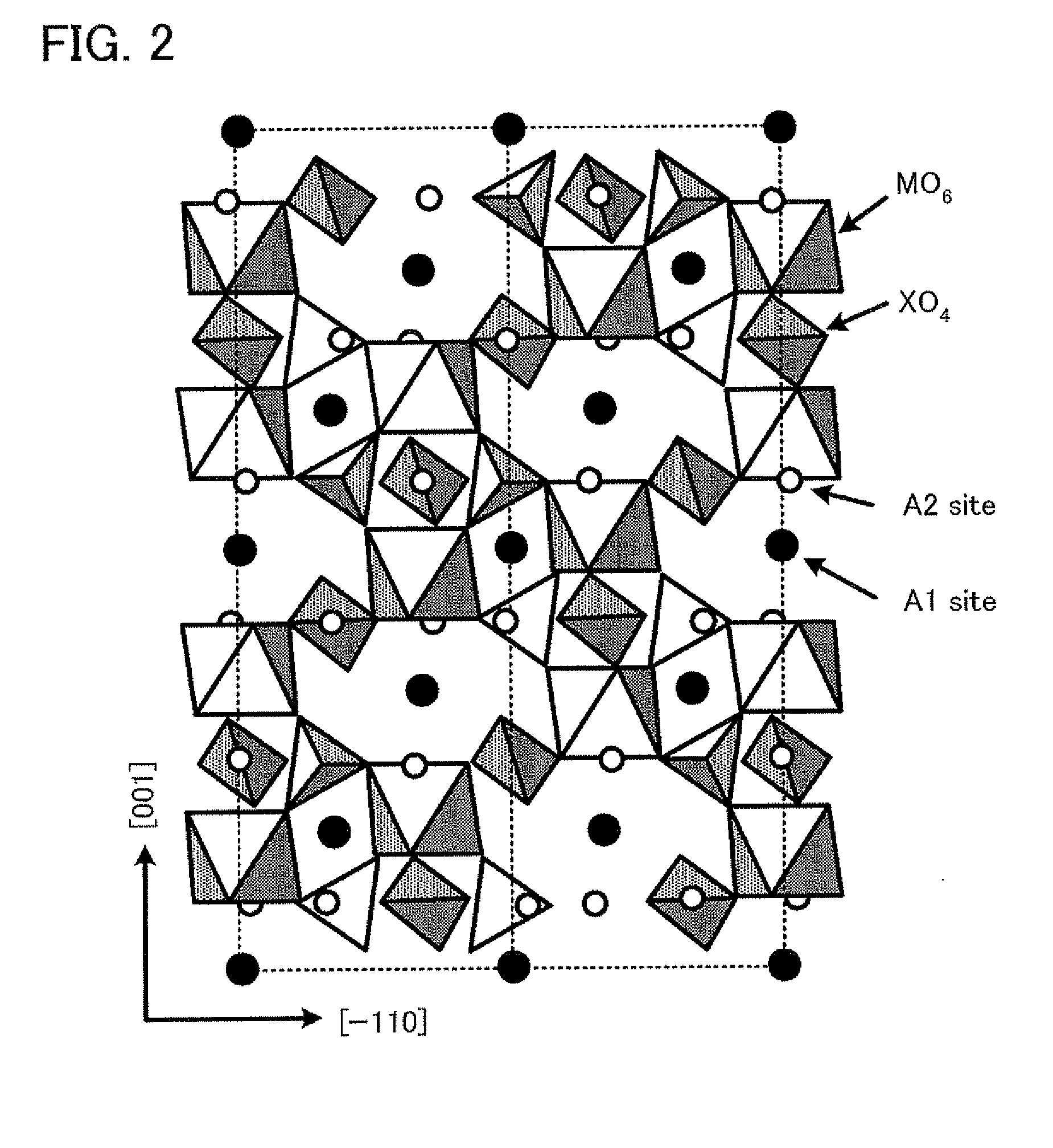Aqueous secondary battery
a secondary battery and aqueous technology, applied in the field of aqueous secondary batteries, can solve the problems that the active materials that can function in non-aqueous electrolyte solutions do not necessarily function in aqueous electrolyte solutions, and achieve the effects of improving energy density, high output power, and high rate performan
- Summary
- Abstract
- Description
- Claims
- Application Information
AI Technical Summary
Benefits of technology
Problems solved by technology
Method used
Image
Examples
example 1
[0036]An aqueous secondary battery was fabricated that included a positive electrode containing Na3V2(PO4)3 as a positive-electrode active material, a negative electrode containing NaTi2(PO4)3 as a negative-electrode active material, and an aqueous electrolyte solution containing NaNO3 as the electrolyte. 90% by weight of Na3V2(PO4)3 as the positive-electrode active material, 6% by weight of carbon black as the electroconductive material, and 4% by weight of a mixture of carboxymethylcellulose and styrene-butadiene rubber as the binder were sufficiently mixed. A proper amount of water was added to the mixture as a dispersant. The mixture was dispersed to produce a positive electrode mixture slurry. This positive electrode mixture was applied to both surfaces of aluminum foil having a thickness of 20 μl, was dried, and was densified with a roll press to produce a positive sheet electrode. 80% by weight of NaTi2(PO4)3 as the negative-electrode active material, 10% by weight of carbon ...
example 2
[0037]An aqueous secondary battery according to Example 2 was fabricated in the same way as in Example 1 except that the negative-electrode active material was LiTi2(PO4)3.
example 3
[0038]An aqueous secondary battery according to Example 3 was fabricated in the same way as in Example 1 except that the positive electrode contained LiFePO4 as the positive-electrode active material, and the negative electrode contained LiTi2(PO4)3 as the negative-electrode active material.
PUM
| Property | Measurement | Unit |
|---|---|---|
| thickness | aaaaa | aaaaa |
| battery voltage | aaaaa | aaaaa |
| thickness | aaaaa | aaaaa |
Abstract
Description
Claims
Application Information
 Login to View More
Login to View More - R&D
- Intellectual Property
- Life Sciences
- Materials
- Tech Scout
- Unparalleled Data Quality
- Higher Quality Content
- 60% Fewer Hallucinations
Browse by: Latest US Patents, China's latest patents, Technical Efficacy Thesaurus, Application Domain, Technology Topic, Popular Technical Reports.
© 2025 PatSnap. All rights reserved.Legal|Privacy policy|Modern Slavery Act Transparency Statement|Sitemap|About US| Contact US: help@patsnap.com



